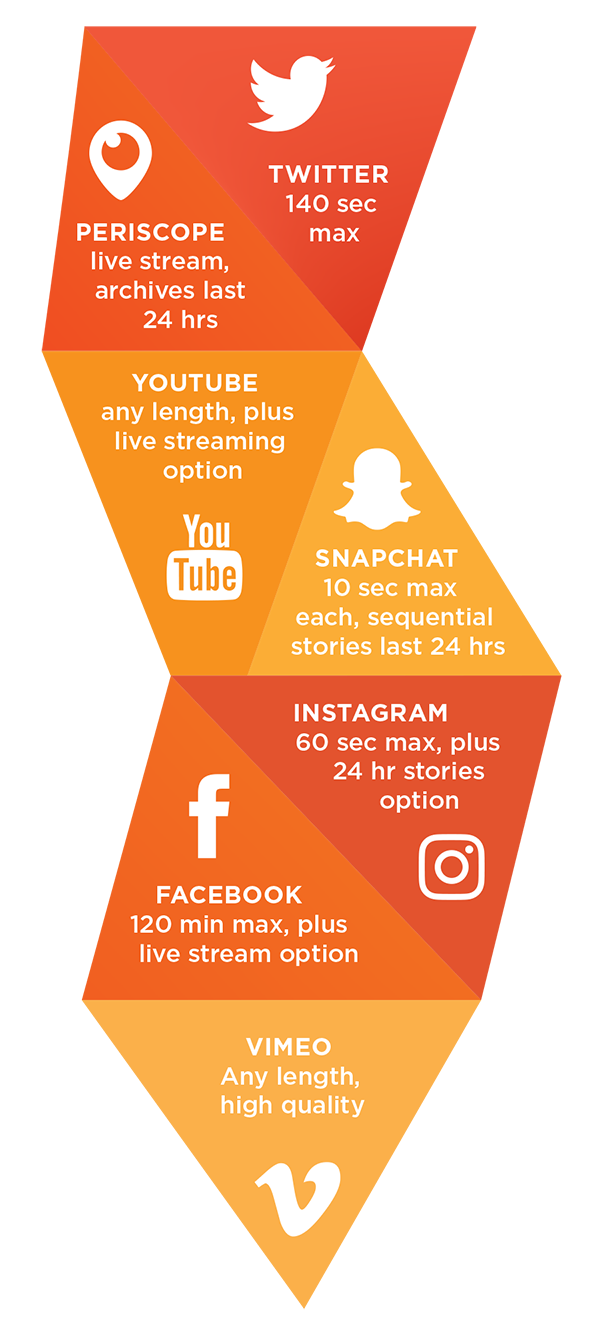LIGHTS, CAMERA, CUSTOMERS. DISCOVER HOW SMALL AND MEDIUM-SIZED BUSINESSES CAN TAP THE POWER OF VIDEO TO EXTEND THEIR REACH.
Video makes a powerful digital marketing tool. In fact, Google now prioritizes high-quality videos and the information they provide over other types of content. Video lets you convey complex ideas in an engaging format. Four times as many customers want to learn about a product by watching a video rather than by reading about it. And the revenues of marketers who use video grow 49% faster than those of companies that don’t. That translates to results for your business. In fact, adding video to your e-mail marketing can increase click-through rates by up to 300% and make customers 10 times more likely to interact with your brand. Big brands have harnessed the power of video for years. Now it’s possible for smaller companies to produce videos that are cost effective and professional.
HERE’S HOW YOU CAN PUT VIDEO TO WORK IN YOUR BUSINESS:
1. Start with a defined purpose.
Before you create a video, make sure you know what you want it to achieve. For example, your goal might be to have viewers fill out a short form, reach out to a salesperson, or simply watch another video. Choose a message that can be conveyed well in a video format, and build in a call to action—a direct step that watchers can take, usually by clicking a link.
2. Create a narrative.
Make sure your video content is easy for viewers to follow by creating a narrative that attracts them and makes a specific point. Before you touch a camera, build a story arc that draws your audience to your message. For example, if you’re presenting your product or service as a solution, start with the problem and demonstrate how you can help resolve it. Your visuals should support this narrative, but they don’t have to be complicated. Even a simple one-camera interview format can be effective. Just be sure to focus on delivering your information cleanly, with good lighting and clear audio.

3. Make it shareable.
Once you’ve made a video you’ll want to share it online and make it easy for others to share. Hosting it on your website gives you the most control over how the video will look and operate online. However, posting video to sites such as YouTube may get your message in front of a larger audience and makes it simple to share across multiple platforms. Don’t forget to extend sharing to social media. Not only can you share video links on Facebook and Twitter, but you can also post them directly to Instagram or create Instagram or Snapchat stories. Keep in mind, too, that some platforms have length restrictions. Finding the right length for your video also depends on your specific goals and areas. Entertaining videos are more effective under two minutes, while documentary or informational pieces can be longer. Knowing there is no one size fits all, and considering different social media limitations will help you get the most bang for your video buck.
4. Optimize your video for search.
Search engine optimization techniques can expand the reach of your video content by improving its position in search results. Start by inserting keywords into your video file names and video titles. Using YouTube to host your video and embedding that YouTube video on your site may also help. Next, surround your video with text to help search engines figure out what it’s about and direct viewers to it. You could write an introduction to post on your company website, or write a blog post that expands on the video’s topic. Including a transcript with the video wherever you post it can also make it more easily searchable.
 5. Track your engagement.
5. Track your engagement.
You made a video—congrats! Now track how audiences respond. Start by looking at the number of clicks your video receives. Then dig deeper by looking at how long viewers watch, whether they scroll down the page to look at surrounding content, and whether they heed your call to action. If you spot problems, there may be relatively simple solutions. For example, if viewers drop off before they reach your call to action, consider shortening your video’s running time.
Video serves as a powerful marketing medium. Whether you make your own or tap professionals to help, creating strong video content can help your brand reach more of your target audience—and lead to more conversions along the way.




 Ad Choices
Ad Choices